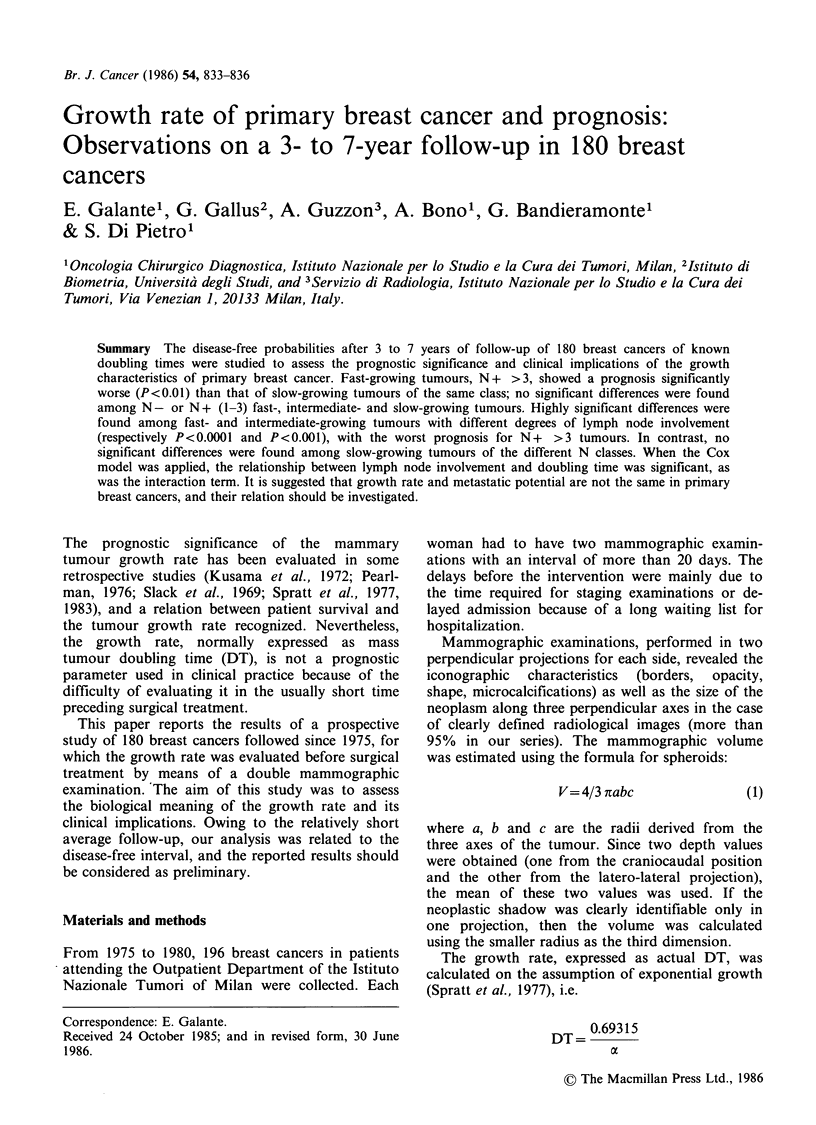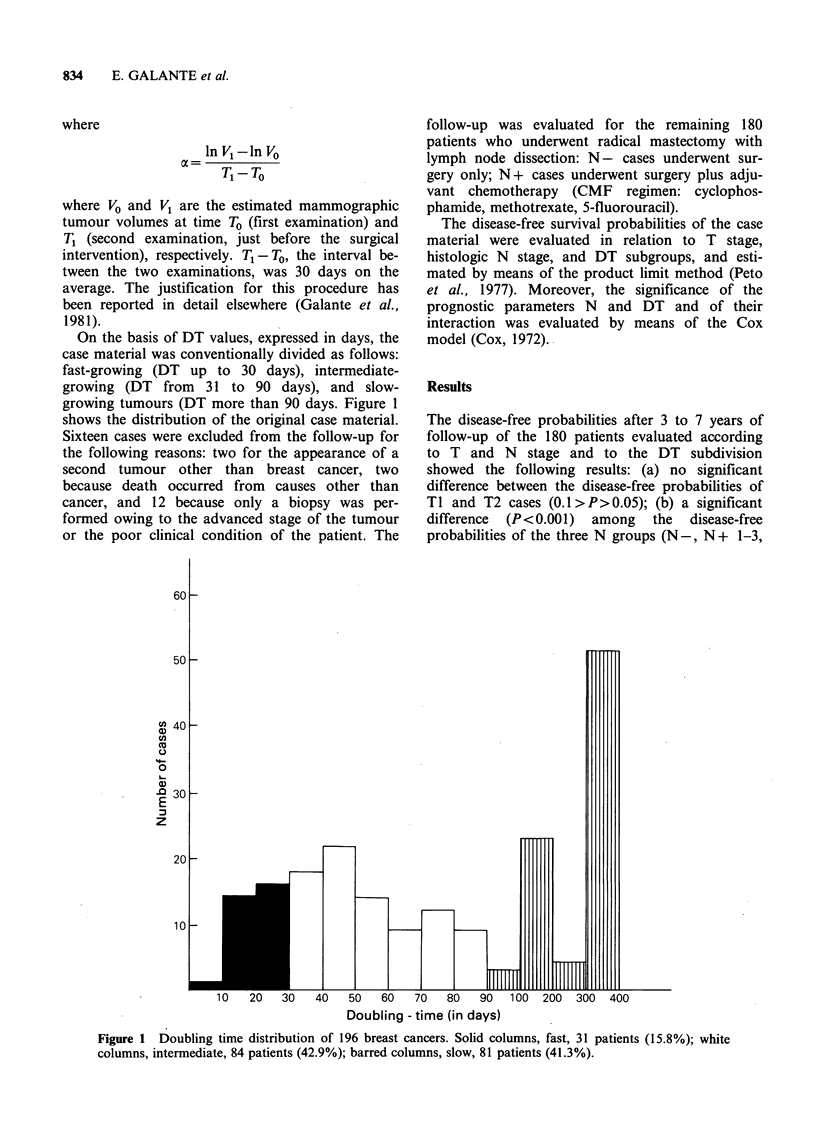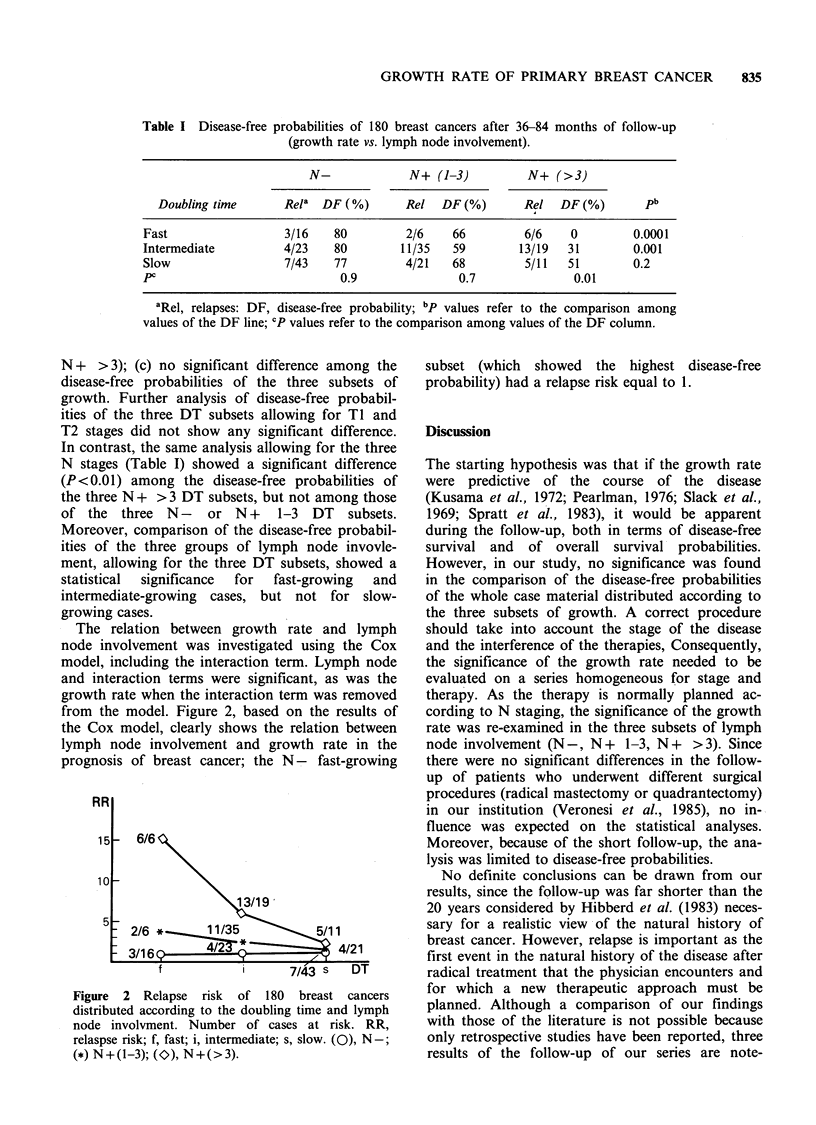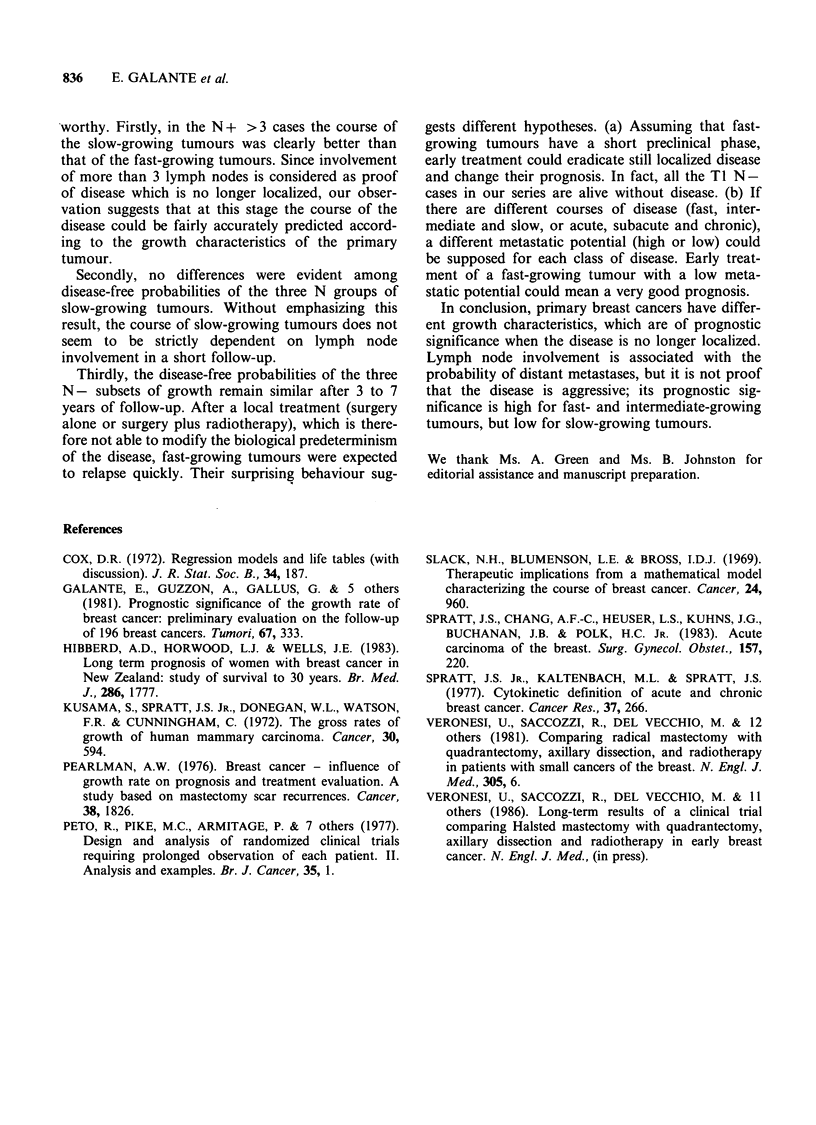Abstract
The disease-free probabilities after 3 to 7 years of follow-up of 180 breast cancers of known doubling times were studied to assess the prognostic significance and clinical implications of the growth characteristics of primary breast cancer. Fast-growing tumours, N+ greater than 3, showed a prognosis significantly worse (P less than 0.01) than that of slow-growing tumours of the same class; no significant differences were found among N- or N+ (1-3) fast-, intermediate- and slow-growing tumours. Highly significant differences were found among fast- and intermediate-growing tumours with different degrees of lymph node involvement (respectively P less than 0.0001 and P less than 0.001), with the worst prognosis for N+ greater than 3 tumours. In contrast, no significant differences were found among slow-growing tumours of the different N classes. When the Cox model was applied, the relationship between lymph node involvement and doubling time was significant, as was the interaction term. It is suggested that growth rate and metastatic potential are not the same in primary breast cancers, and their relation should be investigated.
Full text
PDF



Selected References
These references are in PubMed. This may not be the complete list of references from this article.
- Galante E., Guzzon A., Gallus G., Mauri M., Bono A., De Carli A., Merson M., Di Pietro S. Prognostic significance of the growth rate of breast cancer: preliminary evaluation on the follow-up of 196 breast cancers. Tumori. 1981 Aug;67(4):333–340. doi: 10.1177/030089168106700410. [DOI] [PubMed] [Google Scholar]
- Hibberd A. D., Horwood L. J., Wells J. E. Long term prognosis of women with breast cancer in New Zealand: study of survival to 30 years. Br Med J (Clin Res Ed) 1983 Jun 4;286(6380):1777–1779. doi: 10.1136/bmj.286.6380.1777. [DOI] [PMC free article] [PubMed] [Google Scholar]
- Kusama S., Spratt J. S., Jr, Donegan W. L., Watson F. R., Cunningham C. The cross rates of growth of human mammary carcinoma. Cancer. 1972 Aug;30(2):594–599. doi: 10.1002/1097-0142(197208)30:2<594::aid-cncr2820300241>3.0.co;2-2. [DOI] [PubMed] [Google Scholar]
- Pearlman A. W. Breast cancer--influence of growth rate on prognosis and treatment evaluation: a study based on mastectomy scar recurrences. Cancer. 1976 Oct;38(4):1826–1833. doi: 10.1002/1097-0142(197610)38:4<1826::aid-cncr2820380460>3.0.co;2-l. [DOI] [PubMed] [Google Scholar]
- Slack N. H., Blumenson L. E., Bross I. D. Therapeutic implications from a mathematical model characterizing the course of breast cancer. Cancer. 1969 Nov;24(5):960–971. doi: 10.1002/1097-0142(196911)24:5<960::aid-cncr2820240515>3.0.co;2-u. [DOI] [PubMed] [Google Scholar]
- Spratt J. S., Chang A. F., Heuser L. S., Kuhns J. G., Buchanan J. B., Polk H. C., Jr Acute carcinoma of the breast. Surg Gynecol Obstet. 1983 Sep;157(3):220–222. [PubMed] [Google Scholar]


